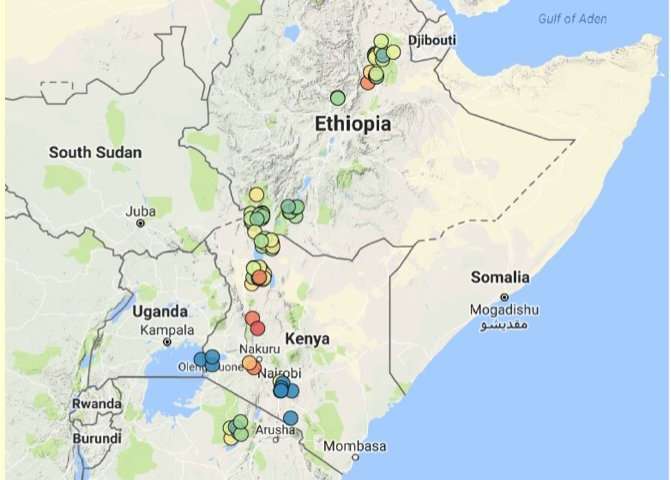The big boys in this story are mega-herbivores – and the animals that preyed on them, the sabre toothed cats. Why did they become extinct. At https://phys.org/print462101695.html … we are told human hunters are usually blamed for such disappearances of animal species over the last few million years or so. This always revolves around the big boys of the African fauna – and the little boys are ignored (even when they become extinct just as mysteriously). Says it all I suppose. In this context Homo erectus is the number one bad guy – but the extinctions go back much further (in the Pliocene as well as the Pleistocene).
 … A new study in the journal Science claims humans could not have been to blame and the real problem was climate change. This is much more realistic as climate change can be code for catastrophism – as well as Milankovitch orbital changes. They specifically home in on changes to the ecosystem of East Africa – namely the oft repeated switch from tropical forest to savannah environments (in what is thought to be the cradle of humanity). It may not of course be the cradle but that is another story. It is where a lot of early human fossils have been discovered. It was also the home of early modern humans such as the pygmies and the bushmen (not all that long ago). The switch to different climate regimes was periodic and is not entirely understood but the point worth taking onboard is that it shows that the shallow thinking involved in blaming human hunters is unrealistic. Species disappearances are a long time mystery to paleontologists (and to some extent, archaeologists). The study involves research from 100 sites in East Africa (see map above) and episodic climate change shows up crystal clear. What caused these environmental changes is a moot point but it is safe to say the geoid won't be discussed – not in a serious manner. Over the last 7 million years there has been substantial extinctions of large herbivores in East Africa (in tandem with environmental habitat change).
… A new study in the journal Science claims humans could not have been to blame and the real problem was climate change. This is much more realistic as climate change can be code for catastrophism – as well as Milankovitch orbital changes. They specifically home in on changes to the ecosystem of East Africa – namely the oft repeated switch from tropical forest to savannah environments (in what is thought to be the cradle of humanity). It may not of course be the cradle but that is another story. It is where a lot of early human fossils have been discovered. It was also the home of early modern humans such as the pygmies and the bushmen (not all that long ago). The switch to different climate regimes was periodic and is not entirely understood but the point worth taking onboard is that it shows that the shallow thinking involved in blaming human hunters is unrealistic. Species disappearances are a long time mystery to paleontologists (and to some extent, archaeologists). The study involves research from 100 sites in East Africa (see map above) and episodic climate change shows up crystal clear. What caused these environmental changes is a moot point but it is safe to say the geoid won't be discussed – not in a serious manner. Over the last 7 million years there has been substantial extinctions of large herbivores in East Africa (in tandem with environmental habitat change).
